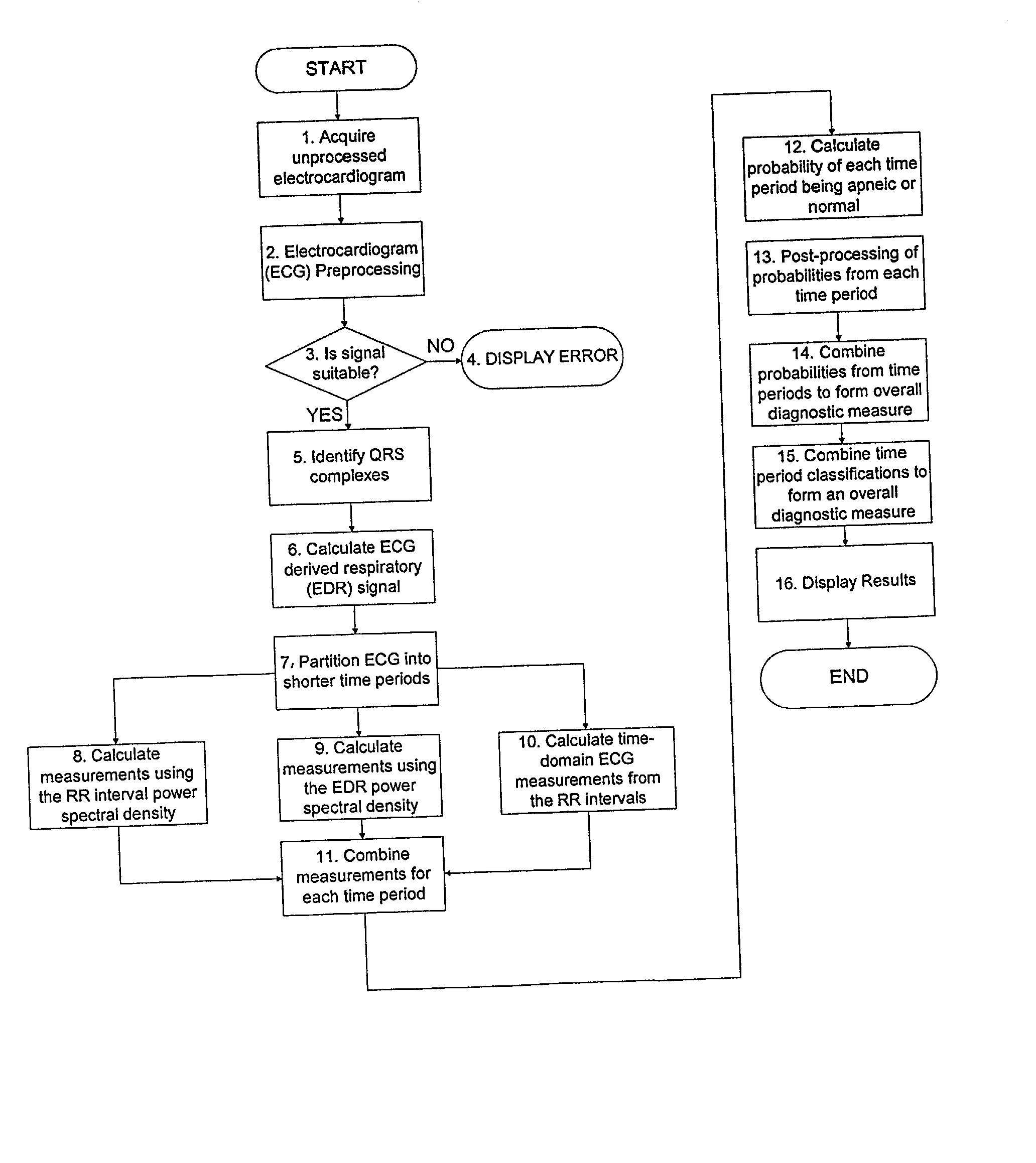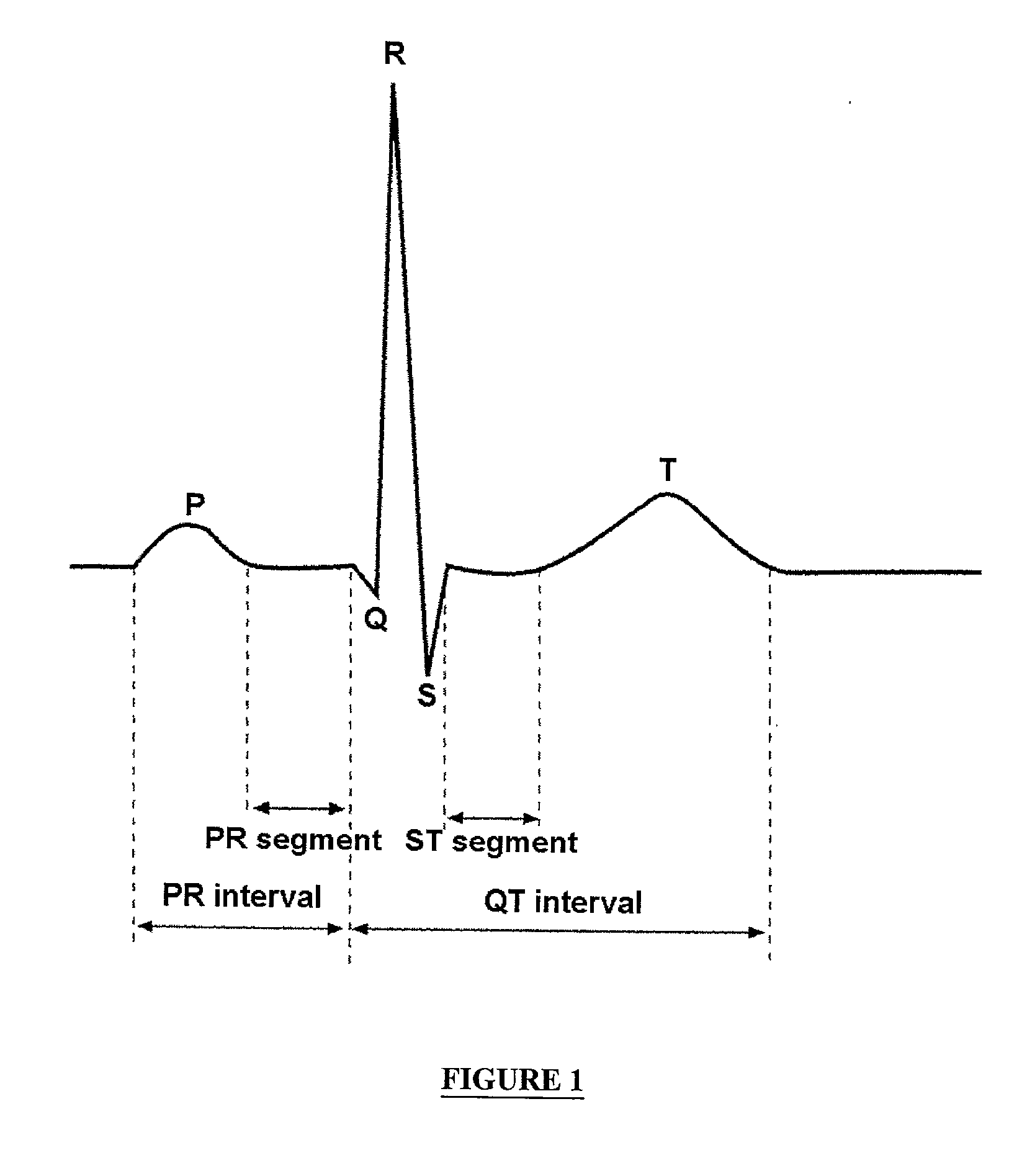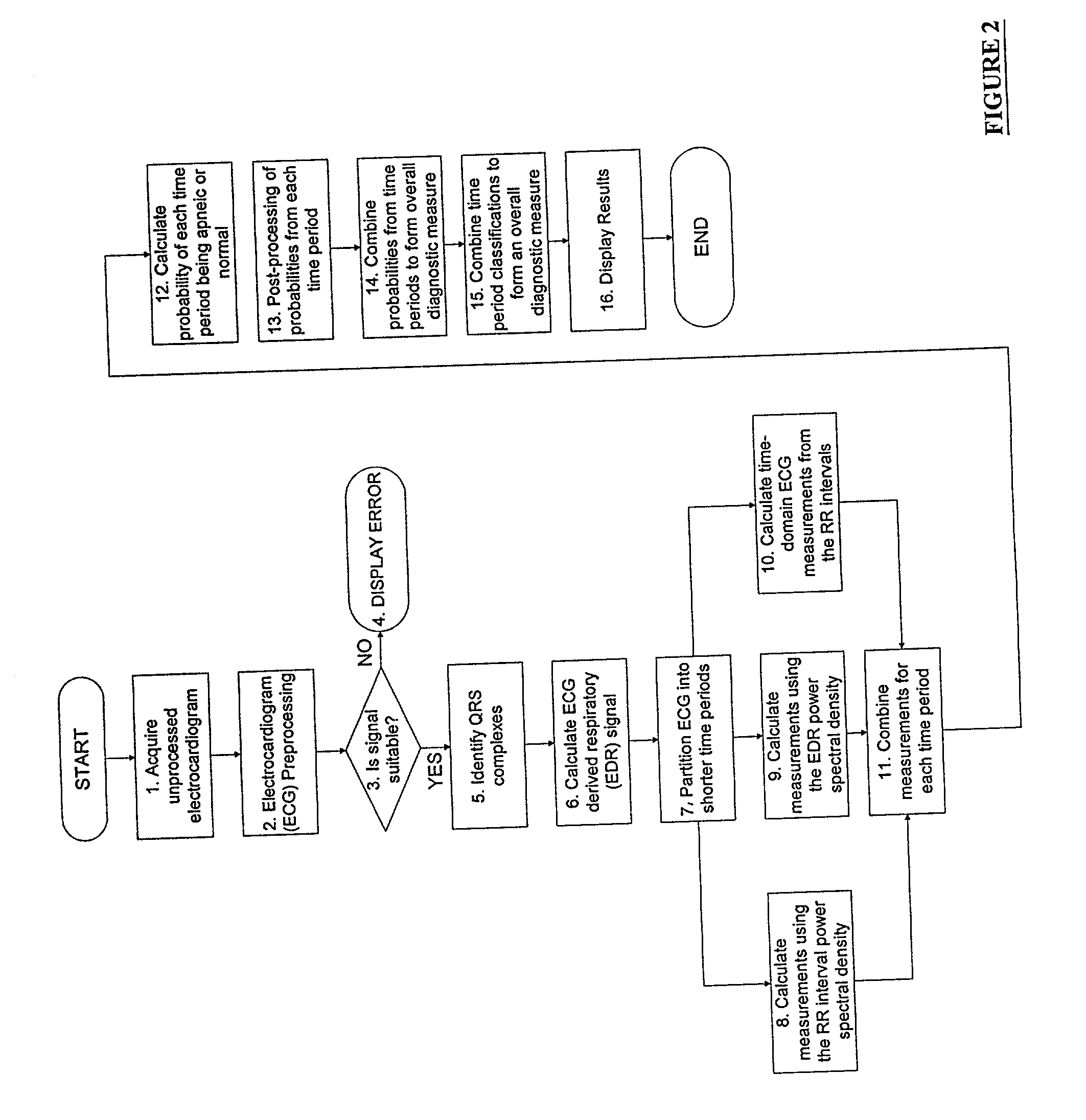Apparatus for detecting sleep apnea using electrocardiogram signals
- Summary
- Abstract
- Description
- Claims
- Application Information
AI Technical Summary
Problems solved by technology
Method used
Image
Examples
Embodiment Construction
[0138] The following is a more detailed description of the classification technique used in the invention, given by way of specific example. Electrocardiogram signals are obtained from a patient by using electrodes and analogue pre-amplifiers as in any standard Holter monitor. Suitable analogue amplification and filtering is implemented to provide a signal which is approximately bandlimited and within the range of the analogue-to-digital converter. Preferably, the electrocardiogram signal is sampled at a rate of 100 Hz or higher, and at up to 16 bits per sample. The unprocessed signal is passed through a variety of digital filtering stages to provide bandpass filtering and removal of motion artefacts, powerline noise, and EMG noise.
[0139] A software algorithm to perform QRS detection is implemented. The software algorithm may be implemented on a computer, for example PC at a location remote from the recording apparatus. Alternatively, the software algorithm for QRS detection may be ...
PUM
 Login to View More
Login to View More Abstract
Description
Claims
Application Information
 Login to View More
Login to View More - R&D
- Intellectual Property
- Life Sciences
- Materials
- Tech Scout
- Unparalleled Data Quality
- Higher Quality Content
- 60% Fewer Hallucinations
Browse by: Latest US Patents, China's latest patents, Technical Efficacy Thesaurus, Application Domain, Technology Topic, Popular Technical Reports.
© 2025 PatSnap. All rights reserved.Legal|Privacy policy|Modern Slavery Act Transparency Statement|Sitemap|About US| Contact US: help@patsnap.com



